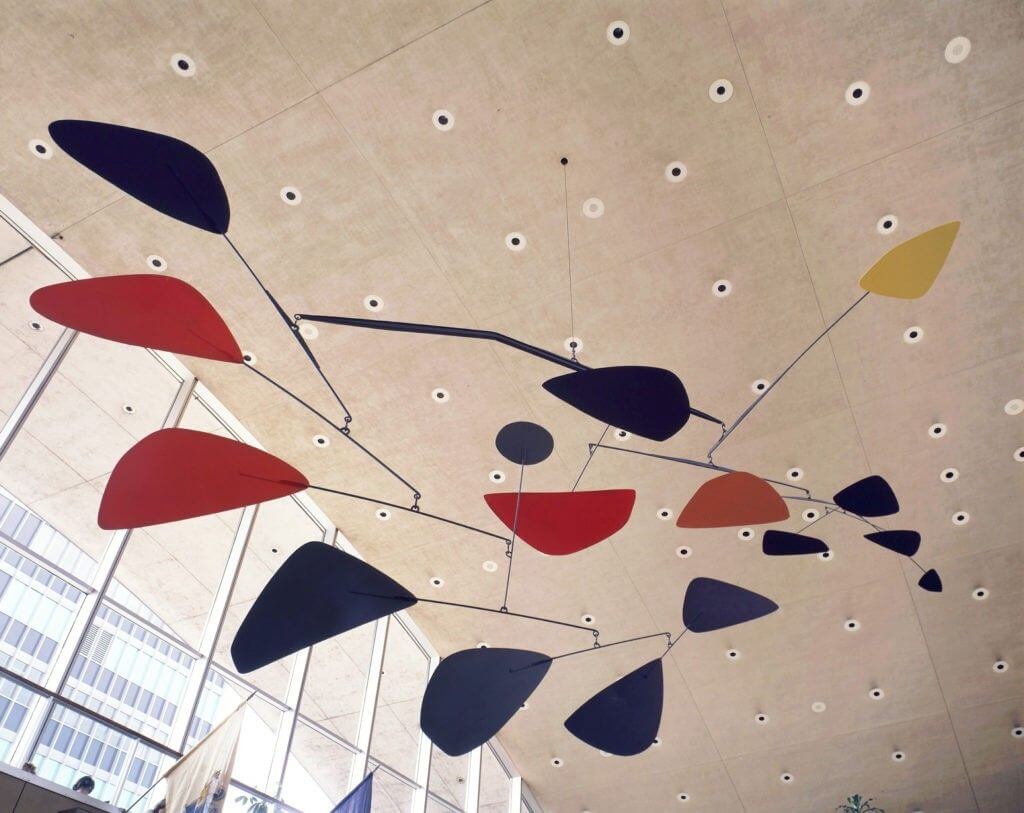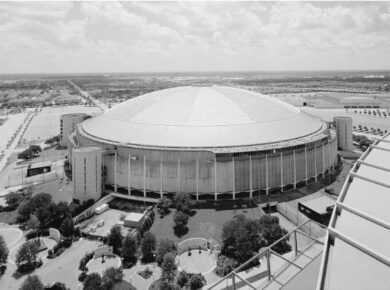Alexander Calder (July 22, 1898 – November 11, 1976) was an American sculptor known for inventing wire sculptures and the mobile, a type of kinetic art which relied on careful weighting to achieve balance and suspension in the air. Although not the first person to use metal and movement in his work, Calder became known for his pioneering use of both.

Image: Alexander Calder, 1957
From the 1950s, Calder concentrated more on producing monumental sculptures. Notable examples are .125 (1957) for JFK Airport in New York, and Trois disques, commissioned for Expo 67 in Montreal.

Author: Idej Elixe
Calder’s largest sculpture, at 25.7 meters high, was El Sol Rojo, constructed outside the Estadio Azteca for the 1968 Summer Olympics in Mexico City.

source: calder.org/works/monumental-sculpture/el-sol-rojo-1968/
La Grande Vitesse (1969), Grand Rapids, Michigan

Photo by Joe Boomgaard
In 1969, Calder’s monumental public artwork, his stabile La Grande Vitesse was installed in the plaza outside City Hall in Grand Rapids Michigan, USA. The title is a tongue-in-cheek French translation of the name ‘Grand Rapids’ which also means ‘Great Speed’.
Bent Propeller (1970), New York

Photo: Art Resource
This work consisted of three bright red stainless steel plates, which were positioned to resemble an enormous ship’s propeller. The work was 7 metres high and stood in the WTC from 1970 to 2091. It was largely destroyed in the attack. A remaining part stands in the 9/11 memorial museum in New York. Hidden Propeller was probably Calder’s most famous stabile.
Most of Calder’s monumental stationery and mobile sculptures were made after 1962 at Etablissements Biémont in Tours, France. He would create a model of his work, the engineering department would scale it up under Calder’s direction, and technicians would complete the actual metalwork — all under Calder’s watchful eye. Stabiles were made in steel plate, then painted.
About the Author:

Bruno Dursin – Managing Director at Believe in Steel. Bruno has more than 30 years of experience in promoting steel & steel solutions. His clients benefit from his extensive network within the building industry.



